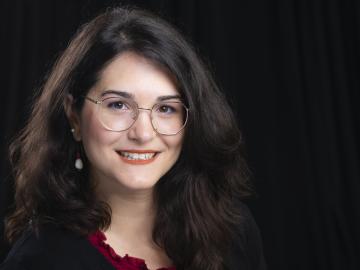
Filter News
Area of Research
News Topics
- (-) Energy Storage (29)
- (-) Materials (59)
- 3-D Printing/Advanced Manufacturing (35)
- Advanced Reactors (10)
- Artificial Intelligence (38)
- Big Data (17)
- Bioenergy (31)
- Biology (29)
- Biomedical (12)
- Biotechnology (7)
- Buildings (14)
- Chemical Sciences (24)
- Clean Water (10)
- Climate Change (31)
- Composites (8)
- Computer Science (58)
- Coronavirus (4)
- Critical Materials (6)
- Cybersecurity (14)
- Decarbonization (30)
- Education (3)
- Emergency (1)
- Environment (62)
- Exascale Computing (17)
- Fossil Energy (2)
- Frontier (21)
- Fusion (14)
- Grid (21)
- High-Performance Computing (33)
- Hydropower (3)
- Irradiation (2)
- Isotopes (12)
- Machine Learning (20)
- Materials Science (36)
- Mathematics (2)
- Mercury (3)
- Microelectronics (2)
- Microscopy (12)
- Molten Salt (2)
- Nanotechnology (13)
- National Security (21)
- Net Zero (5)
- Neutron Science (50)
- Nuclear Energy (38)
- Partnerships (24)
- Physics (20)
- Polymers (6)
- Quantum Computing (12)
- Quantum Science (19)
- Renewable Energy (2)
- Security (5)
- Simulation (29)
- Software (1)
- Space Exploration (8)
- Summit (18)
- Sustainable Energy (25)
- Transportation (30)
Media Contacts

Eva Zarkadoula, an R&D staff member at ORNL’s Center for Nanophase Materials Sciences, has been appointed to the early career editorial board of Nuclear Materials and Energy.

ORNL researchers have identified a mechanism in a 3D-printed alloy – termed “load shuffling” — that could enable the design of better-performing lightweight materials for vehicles.

The word “exotic” may not spark thoughts of uranium, but Tyler Spano’s investigations of exotic phases of uranium are bringing new knowledge to the nuclear nonproliferation industry.

Two of the researchers who share the Nobel Prize in Chemistry announced Wednesday—John B. Goodenough of the University of Texas at Austin and M. Stanley Whittingham of Binghamton University in New York—have research ties to ORNL.

A team of researchers at Oak Ridge National Laboratory have demonstrated that designed synthetic polymers can serve as a high-performance binding material for next-generation lithium-ion batteries.

Ionic conduction involves the movement of ions from one location to another inside a material. The ions travel through point defects, which are irregularities in the otherwise consistent arrangement of atoms known as the crystal lattice. This sometimes sluggish process can limit the performance and efficiency of fuel cells, batteries, and other energy storage technologies.


The use of lithium-ion batteries has surged in recent years, starting with electronics and expanding into many applications, including the growing electric and hybrid vehicle industry. But the technologies to optimize recycling of these batteries have not kept pace.

A University of South Carolina research team is investigating the oxygen reduction performance of energy conversion materials called perovskites by using neutron diffraction at Oak Ridge National Laboratory’s Spallation Neutron Source.

Scientists at Oak Ridge National Laboratory and Hypres, a digital superconductor company, have tested a novel cryogenic, or low-temperature, memory cell circuit design that may boost memory storage while using less energy in future exascale and quantum computing applications.


